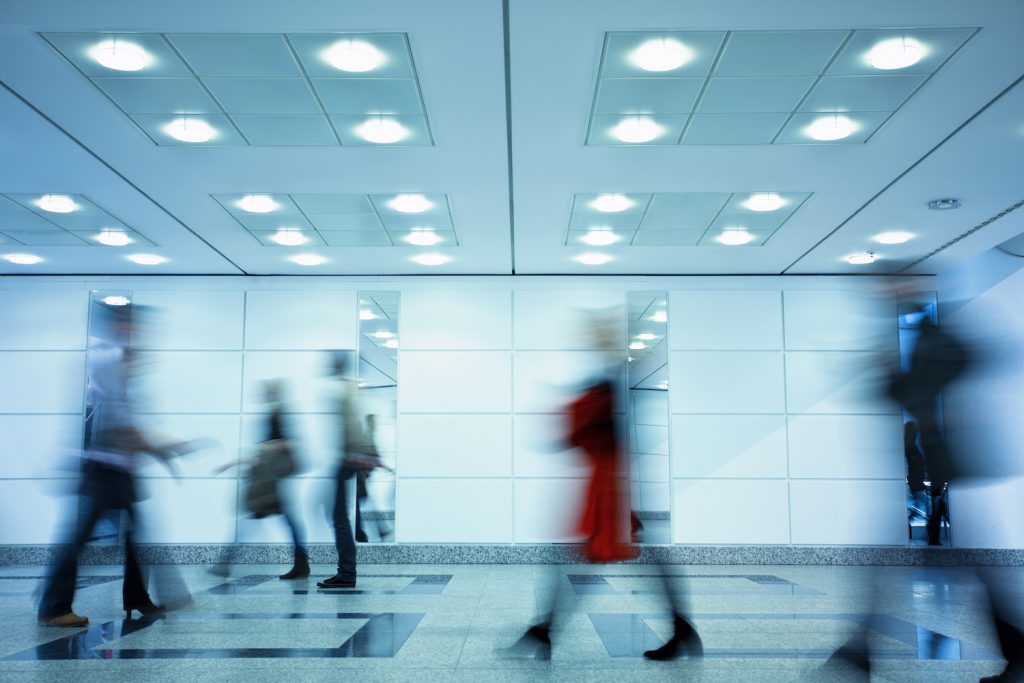Mucus Passports: Mobility in the Time of COVID-19

GUARANTEE
“Have you gotten your COVID-19 test result already?” Vijay (a pseudonym) asks me while ringing up my bill at his salon.
“Yes,” I answer.
“And it’s negative?”
I nod.
“Aren’t you lucky? For so many other visitors to Dubai, they have made their test positive,” he says. “It’s a great scheme: Turn most of the passengers’ tests COVID positive, and you have a steady supply of people to pay for quarantining in hotels—for which there are several packages.”
He adds: “You know how it is didi (elder sister), if you had either an American or a British passport, your test surely would have been—”
His sideways glance finishes the sentence.
“All the best to you,” he says as he slots the cash in its place.
MUCUS
My partner, Ishan, and I were traveling from Delhi to Jakarta via Dubai when I met Vijay. Our choices for flights were limited, so we had to travel two extra days through one extra country for what normally would be an eight-hour journey. I am a doctoral student in anthropology, living in the U.S.—he’s in Jakarta. We were facing the risks of travel during the COVID-19 pandemic so we could finally spend time together.
When our fog-delayed plane arrived at the Dubai airport, the assurance of our pre-boarding COVID RT-PCR test reports from Delhi (TEST 1; less than 40 hours old) were not enough. We had to be tested again, right after landing.
Passengers moved swiftly between booths where women, dressed in protective gear, beckoned. The staff scanned our passports, keyed in our phone numbers, swabbed our nasal linings, and stacked the sample with others in the corner of the booth. Mucus is the new means of mobility, I chuckled to myself.
No immigration lawyer or bureaucrat. No hard-faced official eyeing my passport. No forms and declarations to sign.
The tester said the results would show up via short message service (SMS) links and an app for a private diagnostic laboratory conducting the tests. All Ishan and I had to do was key in our date of birth and passport number. We moved onward to immigration and baggage collection, thinking of nothing but comfortable hotel beds.
TEST 2
By the time we arose the next morning, my test report had already arrived through an SMS link: NEGATIVE.
I checked on the app: NEGATIVE.
Ishan’s report on the app: NEGATIVE.
Deep relief. We could travel onward to Jakarta on the flight we had already booked for early the next morning. I scheduled an appointment at Vijay’s salon, and Ishan and I pushed ourselves to stay up late for the 4:00 a.m. flight. We arrived at the airport with a couple of hours to spare.
At the airline counter, we handed over our documents. The staff person pointed out that Ishan’s test report was dated to a month before.
He had previously traveled through Dubai for work, so perhaps we had downloaded the earlier report by accident. I logged into the app while Ishan explained what might have happened. As the screen lit up, I tapped Ishan on the shoulder, “We got it.”
“Oops, no,” I corrected. It still showed the older report.
We told the staff person that we had been tested together: “See? The QR code pasted on the back of our passports has time stamps that are only three minutes apart.”
“How can it be that my report has arrived while his hasn’t?” I exclaimed, remembering Vijay’s words.
CUTOFF
“Wait,” I said. “We have results from the swabs taken in Delhi.” (TEST 1)
“I am sorry,” the staff person said. “We cannot accept reports older than 72 hours.”
I quickly scanned the time stamps: Ours were 75 hours old.
I reflexively blinked multiple times, squinting at my phone as I refreshed the app screen under the fluorescent lights. The PCR test report for Ishan in Dubai (TEST 2) was supposed to arrive within 12 to 24 hours. It had been 36 hours.
“There are only two possibilities: that they will release your results at the 48th hour, since that is the longest the laboratory can take or—” his voice trailed off. “I don’t want to say it, but it might be—”
He didn’t offer any solutions, except: “We will stop checking people in in about half an hour, so you can keep trying until then.”
We moved aside. I called the help line for the authority responsible for managing all COVID-19 tests conducted under public control. A few automated options later, I was back at the main menu.
“Call back after the 48-hour cutoff,” the service rep at the other end said. “We can’t help you until then.”
His voice broke off just as the airline staffer’s rose near us in the room: “You only have another 15 minutes. If you miss this flight, it will be a loss.”
We changed our tickets.
TEST 3
The next day, at 2:00 p.m., we still didn’t have Ishan’s TEST 2 result.
Only a couple of hours from the 48th hour, I dialed the COVID-19 test complaint number.
“I will forward your complaint to the company that conducted the test,” the man said. “Check in another hour.”
Alarmed, we realized even with the latest results for Ishan, both our tests would be over two days old by the time we got to Jakarta. The city had mandated tests less than 48 hours old for all arriving international passengers. We hurriedly packed our bags; we had a flight to catch within 12 hours and needed to be tested again within the next hour.
We found a private hospital nearby that promised test results within 12 hours.
At the billing counter just before the swab, however, the hospital rep told us that the lab could test up to 700 samples a day. They had already crossed that number. The result would exceed 12 hours—missing the cutoff for our flight to Jakarta.
My fatigue felt like an anesthetic. I shrugged. We got swabbed anyway.
TEST 3 in four days.
By now, we were well over the promised 48th hour for the result of the test at the airport (TEST 2). On the app, we could still only see the results for TEST 1 for Ishan.
“We need an explanation,” I muttered to him.
If we didn’t get either result (TEST 2 or TEST 3) in time, we would be paying customers yet again at the nearby Dubai hotel. Vijay’s words rang as something like a prophecy.
We taxied to the offices of the TEST 2 lab to complain in person.
O FOR 0
A tired but composed guard greeted us at the entry. After we explained our predicament, he dialed customer relations.
The representative stood back on her heels and explained, “Oh, sometimes during the scanning of the passport at the airport, the scanner reads O for 0.” She said to Ishan, “Your passport number is stored incorrectly.”
She smudged one heel across the linoleum. “So, when you look for the result, it doesn’t show up. It pulls up the old one, the one stored correctly. That could be the problem. Let me check. I will need your passport number and date of birth.”
Data points. Digital archives. Encoded error-making? Or?
I flopped into the guard’s chair with his permission. The woman eventually emerged, “Yes, the 0 scanned as O. You will be able to download the result from the app,” she said breezily.
I had been refreshing the app, but it wasn’t even showing the previous result now: RECORD NOT FOUND.
I demanded she give us the report in print. “We can wait here for as long as this takes,” I added. She was cognizant of my minor protest. She disappeared back into the offices.
I paced and Googled the company to learn that they are the largest laboratory and medical equipment supplier in all the Gulf Cooperation Council countries. Our mucus had been in experienced hands.
But my cynicism spread like a tingly rash as I thought about how vulnerable travelers are under COVID-19 precautions. This new means of mobility is only ensured through proof of not carrying the virus. Our mucus had become its own passport. We faced the absurdities of: medical interventions by labs run by corporations. Digital scan errors. Bureaucracies. Time zone cutoffs.
However hard we may have tried to be safe, prepared, and documented, the vagaries of pandemic mobility had kept us vulnerable.
PACKAGE
Soon after landing in Jakarta, we found ourselves in a queue to fill out self-declaration forms for our health status. Just as we moved to the head of the queue, the TEST 3 results arrived in my inbox. We were cleared to move ahead.
But as we pushed the trolleys with our bags through the exit, men in military uniforms halted us.
“Must quarantine for five days. Compulsory for all international passengers,” one of them told Ishan in a mix of Bahasa Indonesia and English.
“We have a negative test result less than 24 hours old,” I exclaimed.
“New virus, new rules,” the guard said, referring to the new strain of COVID-19.
Buses were lined up outside. “You can choose a package for five days,” one of the hotel reps told us. “All meals included.”
The pricing sheet also included the cost of two COVID-19 RT-PCR tests.
“You will be tested once tomorrow morning. And then again after four days,” another hotel rep explained. “If negative both times, you can leave hotel quarantine.”
“Please decide quickly, the last bus is leaving soon,” he said.
Two men loaded our luggage onto the bus.
“You got a nice package,” the hotel rep cheered us, “the best for its price!”
TEST 4
By the time we arrived, the hotel had met their target of rooms to be occupied for the day.
“If you can get your own car, you may leave,” the hotel staffer told us. “Just pay us for the bus ride to here.”
We called a friend. In her car on the way to our apartment, all of us were rather silent.
The next morning, we got swabbed again: TEST 4. The apartment manager had to be assured of our mucus.































